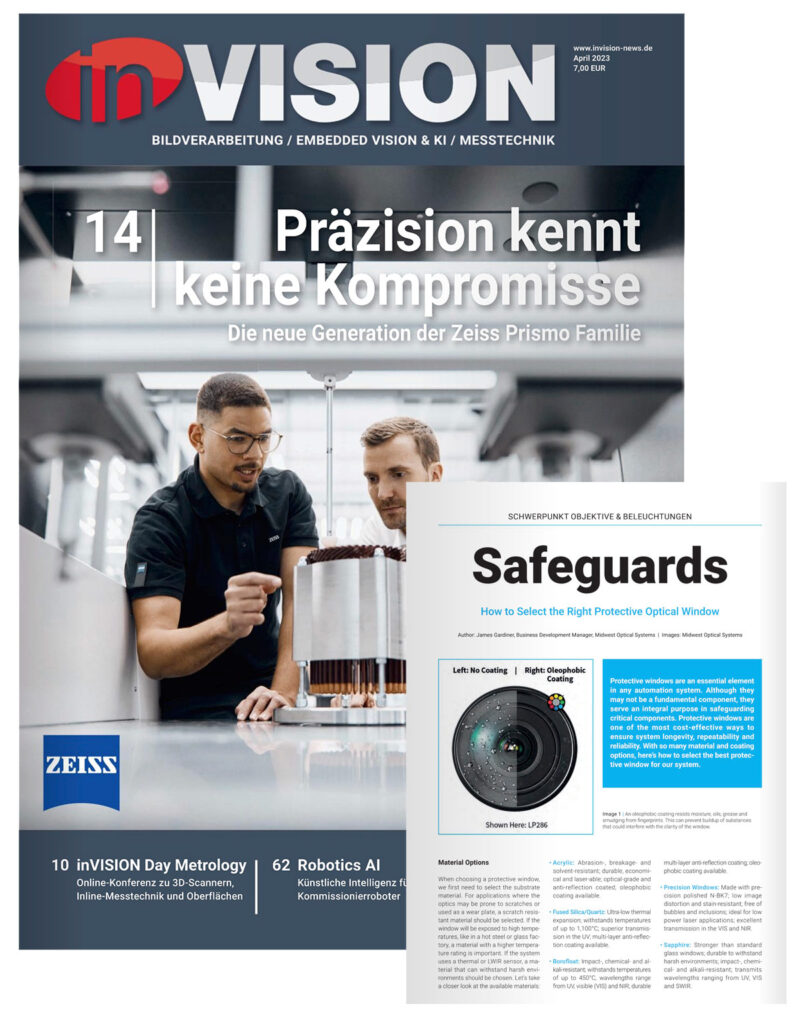MidOpt published in inVISION, April 2023
Safeguards: How to Select the Right Protective Optical Window
by James Gardiner

When choosing a protective window, we first need to select the substrate material. For applications where the optics may be prone to scratches or used as a wear plate, a scratch resistant material should be selected. If the window will be exposed to high temperatures, like in a hot steel or glass factory, a material with a higher temperature rating is important. If the system uses a thermal or LWIR sensor, a material that can withstand harsh environments should be chosen.
Protective windows are an essential element in any automation system. Although they may not be a fundamental component, they serve an integral purchase in safeguarding critical components. Protective windows are one of the most cost-effective ways to ensure system longevity, repeatability, and reliability. With so many material and coating options, here’s how to select the best protective window for our system.
When choosing a protective window, we first need to select the substrate material. For applications where the optics may be prone to scratches or used as a wear plate, a scratch resistant material should be selected. If the window will be exposed to high temperatures, like in a hot steel or glass factory, a material with a higher temperature rating is important. If the system uses a thermal or LWIR sensor, a material that can withstand harsh environments should be chosen.
Read More See Page 40
